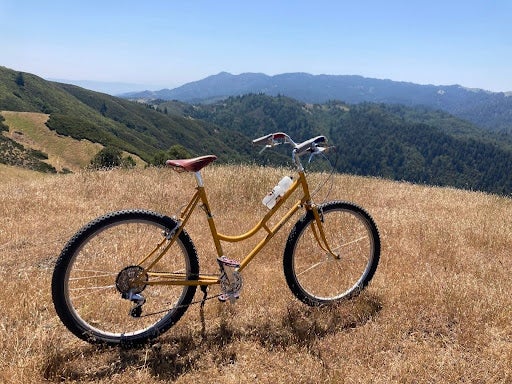In May, I went for a ride on the Mount Tam trails in Marin County, California, with Grant Petersen, the founder and owner of Rivendell Bicycle Works, and his buddy Dan Leto. It was a warm and sunny Sunday morning. As we were unloading the bikes from Dan’s car at the trailhead (and Grant was working on a flat), an older gentleman in an Audi convertible pulled over to admire them. Having seen the 2006 documentary Klunkers, he understood that mountain biking had been born more or less exactly where we were standing.
He then asked: “Are you guys reenactors?”
It was funny to us, since our bikes and our clothing were essentially new, but it also wasn’t surprising given the current state of mountain biking and cycling. We were riding steel bicycles with leather saddles and without suspension, and while our clothes were perfectly normal for three guys hanging out together on a Sunday, they were abnormal in the context of contemporary bicycling where roadies dress like speed skaters and mountain bikers dress like hockey goalies. Certainly to a non-cyclist, we far more closely resembled the people in Klunkers than the people you’ll typically find riding the roads and trails around Marin County today.
Normal Bikes for Normal People in Normal Clothes
A knowledgeable cyclist can tell the difference between a modern Rivendell and a vintage klunker at a glance. But even among them, there’s a general sense that if you choose a bike like this, you’re willfully and obstinately slowing yourself down, dropping anchor in the past, and refusing to change with the times. Bikes are supposed to get faster and easier. They’re supposed to take you deeper into the landscape and over increasingly challenging terrain with less effort. If you’re having trouble getting up a tricky climb without putting a foot down, or you’re not breaking Strava records on the descent, it’s because your equipment is inadequate—you’re “underbiking,” in the current parlance.
Of course, Rivendells are not designed for the body armor set or the rider looking to push the absolute limits of speed and physics. You don’t chug a Red Bull before you hop on your Rivendell, but you might sip a kombucha afterward. Yet these are not relics that are frozen in time, nor are they replica klunkers made for the cycling equivalent of Civil War reenactors. Rather, they’re the natural evolution of those early two-wheelers if they hadn’t become the borderline motocross bikes you see out on the trails today. (Complete with motors, increasingly.)
They’re stable, strong, comfortable, competent, and capable bicycles, the designs of which Rivendell has refined and continues to refine. The mountain bike you rode 40 years ago did not have the ample tire clearance of Rivendell’s trail bike, the Clem Smith, Jr., or the long wheelbase that keeps the bike planted on rough terrain (whether you’re climbing or descending), or the low-slung top tube to facilitate dismounts, and remounts both planned and unplanned. (If you think a step-thru frame makes it a “girl’s bike,” you need to get with it.) Your old mountain bike cleared 2.1” tires if you were lucky, it had tiny wheels, a short piece of pipe for a handlebar, and a low-slung cockpit, and on challenging downhill sections it did its best to send you over the bars.
A company that makes normal bikes for normal people in normal clothes who want to enjoy the outdoors in a completely normal way faces certain challenges in a cycling industry that considers this form of normality abnormal, though. One of these is sourcing drivetrain components. The dominant suppliers of bicycle shifting systems are Shimano and SRAM, and while both continue to make mechanical drivetrains, they’re clearly focused on a wireless, electronic future. At the high end, their offerings have been almost exclusively battery-powered for years, but as the technology continues to make its way onto lower-priced bicycles, electronic shifting becomes increasingly ubiquitous. As a result, plenty of bike companies now offer frames that are not compatible with mechanical shifting at all.
Rivendell’s ‘Low Normal’ Derailleur
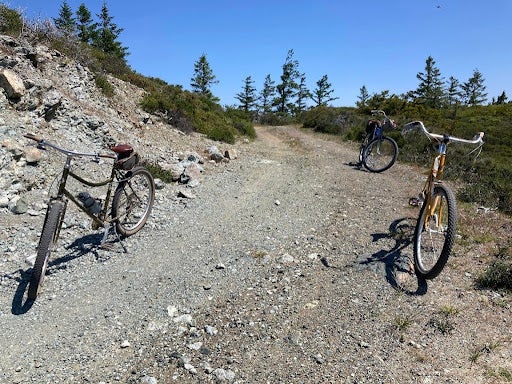
The mechanical systems these companies produce are now often designed around wide-range, single-ring drivetrains. Such systems have become popular because they’re both simple and robust. However, the individual components are generally not suitable as replacement parts for older drivetrains, or for riders who still prefer more traditional double or even triple chainring setups as opposed to clicking their way up and down massive 12-speed 10-50t cassettes. Front-shifting is going extinct, which is lamentable, because on undulating terrain sometimes nothing beats the simplicity of dropping into the small ring for the climb and then shifting back onto the big one for the descent.

Rivendell has long seen where things are going. Rather than design their frames in response to what the big drivetrain manufacturers are producing, they’ve been designing and selling their own drivetrain components, drawing inspiration from the past but improving and refining them for today’s bikes and today’s riders. Rivendell’s Silver friction shifter is an update of the SunTour Power Ratchet, which was one of the finest shifters ever made until Shimano introduced SIS (“Shimano Indexed Shifting”) in 1984 and eventually put SunTour out of business.
Friction shifting unlocks an entire world of component compatibility, allowing you to mix cassettes and shifters and derailleurs from different manufacturers across many decades. The Silver shifter can be mounted on the downtube or the bar end or pretty much anywhere else. It feels like winding an expensive watch thanks to the extremely fine ratchet, and it will let you shift pretty much any derailleur across as many or as few cogs as you want.
Now, Rivendell is getting ready to offer its own Silver-branded rear derailleur, the OM-1. (Actually it will be a “derailer,” as Rivendell eschews the unnecessary letters of the French spelling. However, after all these years, I just can’t stop myself from typing them, so it will still be “derailleur” in this story going forward.)
A small bike company like Rivendell really has no business designing and selling a derailleur. A frame or a tire or a handlebar or a line of Scottish cotton bike bags or even a ratcheting shifter is one thing, but the rear derailleur (even a budget one) is one of the most complicated contraptions on your bike—a robust yet highly sensitive articulating arm consisting of a bunch of plates and springs and rivets and pulleys that must all fit together with perfect precision. You certainly don’t need to be an engineer to install or adjust a derailleur, but if you’ve ever tried to disassemble one, you understand how intricate it is, and if you then tried to put it back together again, your brain probably exploded along with the derailleur itself. No bicycle company in its right mind wants to deal with the expense and sheer hassle of designing a derailleur. It’s a part you buy from one of the big companies and bolt onto the bike. It’s like designing your own kitchen faucet instead of picking one up from Home Depot.
But Rivendell is not a normal bike company and this is no normal derailleur—or rather it is, but it’s low-normal, which is the exact opposite of pretty much every derailleur out there.

Rivendell’s OM-1 rear derailleur will be available in mid-September, the company states.
Here’s how Rivendell explains it on its packaging:
RIVENDELL’S S!LVER OM-1, BETTER BECAUSE IT’S BACKWARDS
Most rear derailers are “high-normal” (HN) style: With no cable tension,
the spring pulls the pulleys to the HIGH gear (small cog). The spring in
a “low-normal” (LN) derailer pulls the chain to LOW gear. Our S!LVER OM-1
is this type. The OM means “opposite movement,” which works better,
linguistically, than “low-normal,” since “low-normal” isn’t normal. All front
derailers are LN, so when you add a LN rear, the left and right shifters
work in mirror image; the same direction or the same levers for high or low
gears. “Ghost shifts” and the rare broken or slipped cable default you to
lower gears, a blessing on steep hills or in the boonies. LN shifting takes
ten shifts to get used to, twenty shifts to love, and there isn’t one drawback.
The OM-1 is a Beacon of Hope
Just as Rivendell didn’t invent the ratcheting friction shifter, they also didn’t invent the low-normal derailleur. In recent cycling history, the most prominent examples in the marketplace were Shimano’s “RapidRise” derailleurs of the late ‘90s and early aughts. RapidRise was aimed primarily at mountain bikers, who ultimately rejected it, even though it worked perfectly well. Not only was it different and therefore weird, but Shimano eventually paired it with one of its worst mountain bike shifters ever, the hated “Dual Control Lever” system, whereby you moved the entire brake lever to shift—just like their road shifters, only horizontal—and so people came to associate the two. Between the weird derailleurs and the floppy shifters, people eventually wrote RapidRise off as just another Shimano gimmick, like BioPace eccentric chainrings or their short-lived Airlines air-powered shifting system.
But as it turns out, low-normal derailleurs pair brilliantly with friction shifters, and so Rivendell has been stockpiling them for years. Like everyone else, I’d always dismissed RapidRise derailleurs despite not having tried them myself, but in 2020 Grant sent me a 9-speed era RapidRise XTR M950, which I installed on my A. Homer Hilsen, already equipped with Silver friction shifters. Because the spring moves the derailleur inboard instead of outboard when you release the cable, downshifts were noticeably smoother and easier. More significantly, my bar end shifter was well out of the way of my knee on climbs, because with a low-normal system both shifters are pointing straight down instead of sticking straight out as they do with high-normal derailleurs. I’ve ridden everything from Di2 to mechanical Campagnolo Super Record, but in terms of sheer smoothness, the drivetrain on my Homer was now perhaps the finest I’d ever used.
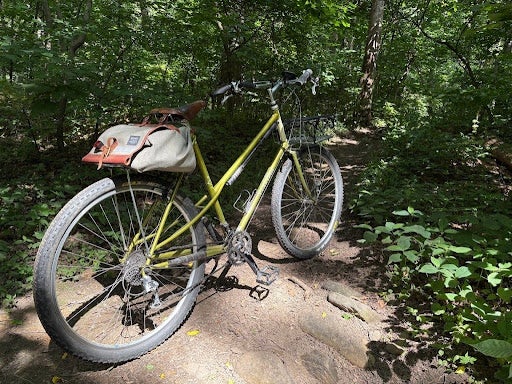
Rivendell’s path to its own production low-normal derailleur was as undulating and intermittently rocky as the Mount Tam trails we rode that spring day when we were mistaken for historical reenactors. Bicycle frame and component manufacturing has largely shifted overseas, but derailleur manufacturing has pretty much always happened overseas. There’s no Great American Derailleur Company that shifted (that’s a pun) its manufacturing to China and left a small town destitute, and with certain exceptions, such as the rare and exotic Paul Powerglide derailleur of the mid-’90s, quality derailleurs have pretty much always come from either Europe or Asia. So tariffs or no tariffs, while a bike company can still have something like a frame manufactured domestically if they really want to, there’s pretty much no way to get someone in the U.S. to build you a derailleur. And even having one made overseas in the factories where they already make derailleurs is a challenge, because no bike company in its right mind designs its own derailleurs. But Rivendell wanted low-normal derailleurs that work great with friction shifters and double and triple cranks (not to mention silver and smooth instead of black and chunky like most modern derailleurs), and they didn’t want to keep settling for new old stock or existing production derailleurs that weren’t quite what they wanted, so they took it upon themselves to make it happen, time and expense be darned.
In 2020, around when Grant sent me that XTR RapidRise, Rivendell engaged an engineer and bike industry veteran, Dan Falvey, to work with them on designing a low-normal derailleur. This eventually yielded a beautiful, wholly original design and a functioning prototype that was prohibitively expensive to produce. (The cycling world does not need another $900 rear derailleur, which is about what the latest Campagnolo Super Record electronic rear derailleur costs; in fact, the cycling world arguably doesn’t need any $900 rear derailleurs.) So the OM-1 that will be available for purchase will cost $150, and it integrates the low-normal action integrated into a design from their manufacturer that is far easier to produce, yet will still look far better on a lugged steel bicycle than something like a Shimano CUES—no offense to Shimano CUES, but it ain’t exactly pretty.
By the time I received a Silver OM-1 prototype (around the time I met Grant and Dan for the ride on Mount Tam) I’d been using Silver friction shifters and low-normal derailleurs on two of my bikes, so I already knew what to expect when I installed it on my Platypus, which also used Silver shifters but still had a high-normal derailleur.
When downshifting with the OM-1, the chain flew right up the cassette with the flick of the lever, and because of the low-normal action, front and rear shifting actions now matched. With the Silver shifters in under-the-bar-thumbie mode, that meant forward to downshift, and back to upshift, on both the front and the rear.
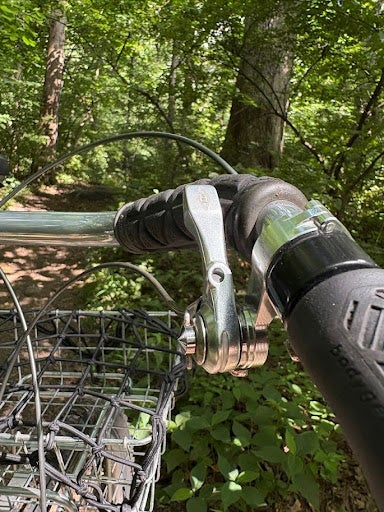
Platypus uses its share of chunky black mountain bike components, so it doesn’t require a classically elegant derailleur with smooth contours and a silver finish (plus its grimy drivetrain is an affront to said finish), but it certainly doesn’t hurt, and aesthetically it’s a component that would look at home on anything from a vintage road bike to a modern gravel bike, even (gasp!) a carbon one.
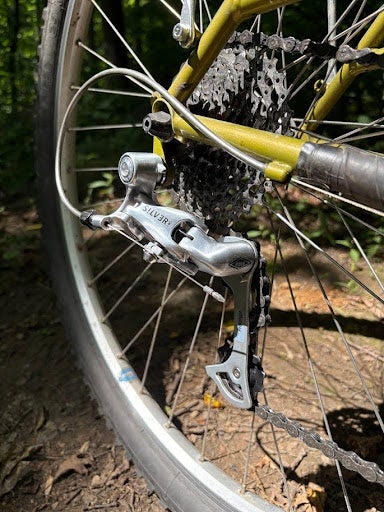
If all this talk of low-normal derailleurs and friction shifting makes you scoff, rest assured that nobody is trying to take away your suspension and your dropper post and your disc brakes and your wireless drivetrain. You’re safe. The mainstream bike industry is committed to these things, and to you. The Silver OM-1 is for the older riders who feel left behind, or for the younger riders who want to try something new, or really for anyone who wants an utterly simple and smooth-shifting bicycle that doesn’t require firmware updates and is compatible with decades upon decades’ worth of components. It also represents the first complete dedicated friction drivetrain in probably 40 years, it brings meaningful improvements to it (ratcheting shifting and low-normal action), and if you’re friction-curious and decide to try it out, you’ll find it to be the very pinnacle of refinement. And the reason you’ll still be able to buy all this stuff new in 2025 like a civilized person instead of scrounging for used parts on eBay is because a small bike company took on a huge project that makes little financial sense, all for the love of cycling.
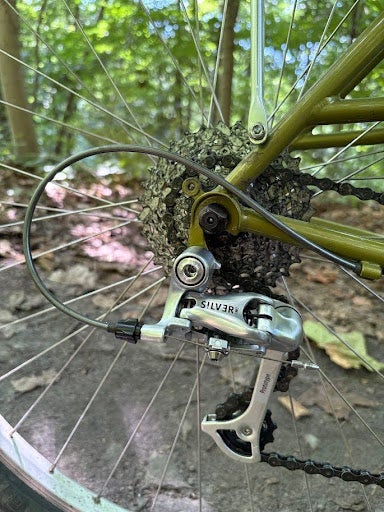
So yes, the TLDR of it all is that Rivendell has made a derailleur that works backwards. But it’s more than that, and as our bikes go electronic like everything else, the OM-1 is a low-normal beacon of hope for those of us who don’t want to add our bikes to the increasingly long list of Stuff That Needs To Be Charged. Rivendell is fighting for the future of the mechanical bicycle so you don’t have to.


